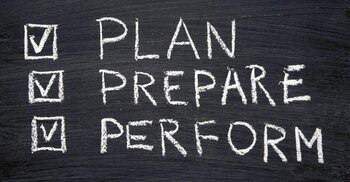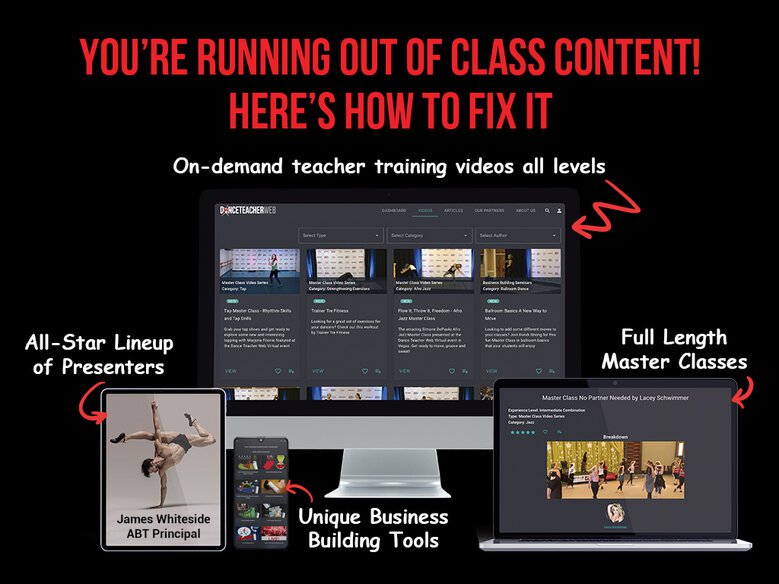As dance teachers, we understand there’s more to being prepared for class than signing up and walking in with your dance bag. In this article we will discuss habits that will improve your overall class experience.
Prior to coming to class, it is well worth your time to look into the background of the instructor and the style being taught. This may affect your physical preparation for class. While optimally a dancer should have the strength, flexibility, and agility of any other athlete, some styles emphasize different skills. For example, hip-hop and tap dance necessitate building quick-twitch muscle response to perform fast movements. Ballet, lyrical, contemporary, and related styles demand flexibility for elongated lines and flow. Knowing the style of the instructor may let you know which of the physical skills may be emphasized in their class.
Additionally, to be physically prepared for class, it is helpful to do a light stretch and get your heartrate up a little before entering the classroom even though class will often include a warmup and stretch. Also, to be able to sustain your energy throughout the entire class, you need to be nutritionally prepared. There is much information online on what kind of fuel you need to dance full-out for several hours. I would approach your nutritional knowledge as a competitive athlete.
Learning dance requires an open mind; therefore, one is well advised to not make too many assumptions about the class. “Don’t dance yesterday’s news.” This means understanding that what is applied to one class may not apply to the next; although there are many things that carry over throughout dance such as the attitude and focus with which you take the class. I love it when students enter class with a “Take the Stage” energy. Making eye contact with the teacher lets them know that you are focused and ready to take in information.
We hear the word discipline in dance so often, and I believe that this should include respect for the art of dance, respect for the teacher, and respect for the other dancers in class- all of which should enhance respect for yourself and promote confidence. Different teachers in different classes may have different protocols when teaching dance manners. Take note of these. Once you have thanked the teacher for the class, it is very valuable to reflect on the class later in the day and visualize yourself as a perfect dancer.
These suggestions should better prepare a dancer to get the most out of class!

I use a dance alphabet for the younger kids which helps them to gain good dance habits. This is one dance alphabet which has proved successful for me:
Attitude: We come to class with a good attitude.
Belief: We believe we are going to be good dancers.
Commitment: We go-for-it all the way.
Discipline: We are always in control of our behavior.
Energy: We keep our energy up throughout the class.
Focus: We concentrate on all the information given in class.
Grace: We are poised both mentally and physically.
Health: We maintain our physical well-being.
Inspiration: We are motivated by the excellence of other performers.
Joy: We feel joy when we dance, and we want the audience to feel our joy.
Kindness: We are considerate of others in the studio and in our everyday lives.
Love: We let our passion for dance motivate us.
Musicality: We let the music shape our movement. (Learning about music is of great value.)
Neatness: We come to class appropriately dressed.
Open-Mindedness: We are always open to new ideas.
Practice: We make time for repetitions to perfect our skills.
Questions: We are not afraid to ask for clarification.
Respect: We show respect for the teacher, for ourselves, for our fellow dancers, and for the art of dance.
Style: We try to match the style that the teacher gives.
Technique: We concentrate on how to move efficiently.
Understanding: We always ask ourselves if we truly understand.
Versatility: We strive to become a well-rounded and complete dancer by exploring all genres.
Will-Power: We always try to have a strong mind.
X Marks the Spot: We maintain our special awareness in class to prevent collisions.
Yourself: We are responsible for ourselves in every way.
Zone: We want to combine all the tools that we’ve listed to find ourselves “in the zone.”
Here;s to your success, Tony
Join our Community of Dance Educators By CLICKING HERE
Get instant access to 1000+ videos including full length master classes, "How To" teacher training tips, Choreography with break downs and 100's of lesson plans and teacher enhancement articles
We offer dance studio owners the ultimate toolkit with business building articles, videos and downloadable forms. Topics include help with marketing, increasing revenue and improving communication.
Our Studio Owners VIP consulting services offer one-on-one coaching for a more hands on approach to your business development. Inspiration is only a click away!


